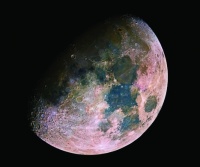UK Moonlite project sets sights on lunar surface
While scientists pore over the latest pictures from Mars, a team of UK engineers is preparing to probe a cosmic body much closer to home. Jon Excell reports.

As the 700mph missiles slammed satisfyingly into their targets, the scientists and engineers assembled at Qinetiq’s Pendine test facility in South Wales last month congratulated each other on a job well done.
To a casual observer, it was business as usual: the range is regularly used to put military projectiles through their paces. But the attendance list, dominated by the cream of the UK’s space and planetary scientists, revealed this project had much less destructive aims.
Last month’s tests represented the first steps in Moon Lightweight Interior and Telecoms Experiment (MoonLITE), an ambitious UK plan to create a geophysical sensor network on the moon by firing a series of projectiles into its surface.

The aim is to launch four heavily instrumented penetrators from an orbiter at previously unexplored areas of the lunar surface: the two poles and the lunar far side. Hitting the moon at speeds of up to 300m/s, they will become embedded up to 3m beneath the lunar soil, or regolith, where they will use a purpose-built suite of scientific instruments to probe the rock and measure seismic activity.
Register now to continue reading
Thanks for visiting The Engineer. You’ve now reached your monthly limit of premium content. Register for free to unlock unlimited access to all of our premium content, as well as the latest technology news, industry opinion and special reports.
Benefits of registering
-
In-depth insights and coverage of key emerging trends
-
Unrestricted access to special reports throughout the year
-
Daily technology news delivered straight to your inbox










Water Sector Talent Exodus Could Cripple The Sector
Well let´s do a little experiment. My last (10.4.25) half-yearly water/waste water bill from Severn Trent was £98.29. How much does not-for-profit Dŵr...